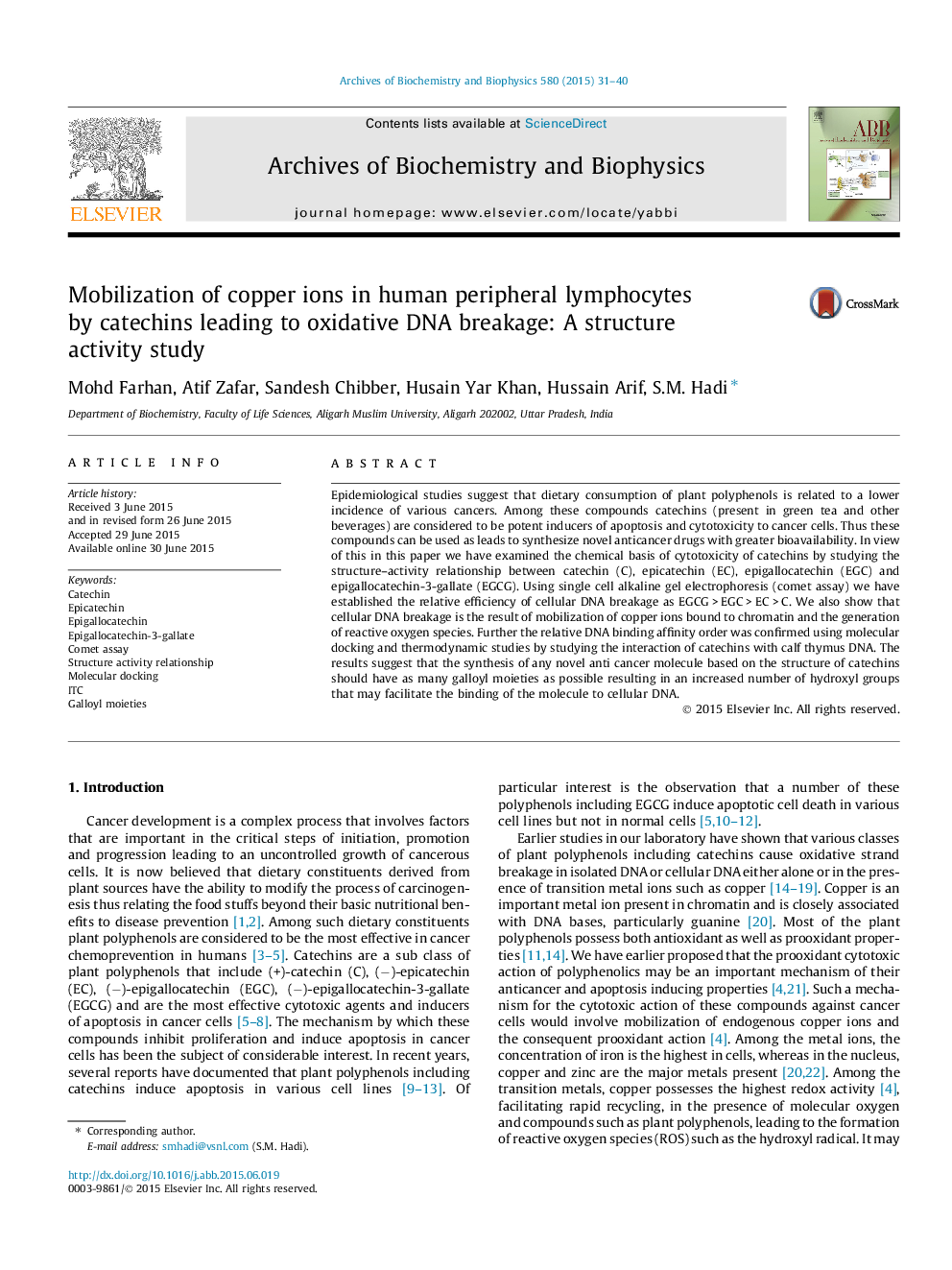| Article ID | Journal | Published Year | Pages | File Type |
|---|---|---|---|---|
| 8289623 | Archives of Biochemistry and Biophysics | 2015 | 10 Pages |
Abstract
Epidemiological studies suggest that dietary consumption of plant polyphenols is related to a lower incidence of various cancers. Among these compounds catechins (present in green tea and other beverages) are considered to be potent inducers of apoptosis and cytotoxicity to cancer cells. Thus these compounds can be used as leads to synthesize novel anticancer drugs with greater bioavailability. In view of this in this paper we have examined the chemical basis of cytotoxicity of catechins by studying the structure-activity relationship between catechin (C), epicatechin (EC), epigallocatechin (EGC) and epigallocatechin-3-gallate (EGCG). Using single cell alkaline gel electrophoresis (comet assay) we have established the relative efficiency of cellular DNA breakage as EGCGÂ >Â EGCÂ >Â ECÂ >Â C. We also show that cellular DNA breakage is the result of mobilization of copper ions bound to chromatin and the generation of reactive oxygen species. Further the relative DNA binding affinity order was confirmed using molecular docking and thermodynamic studies by studying the interaction of catechins with calf thymus DNA. The results suggest that the synthesis of any novel anti cancer molecule based on the structure of catechins should have as many galloyl moieties as possible resulting in an increased number of hydroxyl groups that may facilitate the binding of the molecule to cellular DNA.
Keywords
Related Topics
Life Sciences
Biochemistry, Genetics and Molecular Biology
Biochemistry
Authors
Mohd Farhan, Atif Zafar, Sandesh Chibber, Husain Yar Khan, Hussain Arif, S.M. Hadi,
